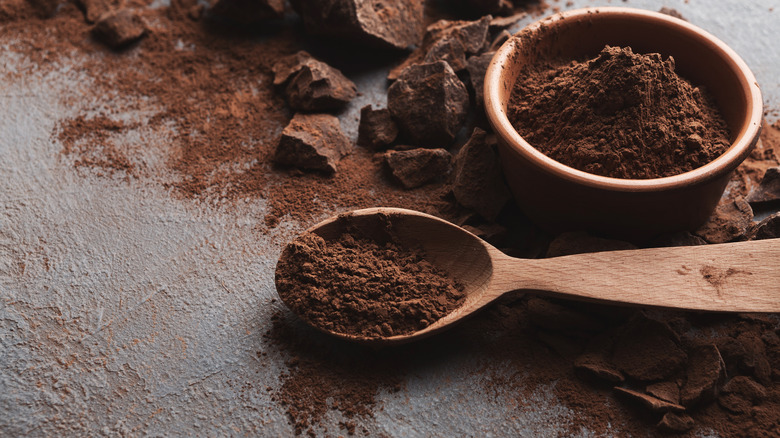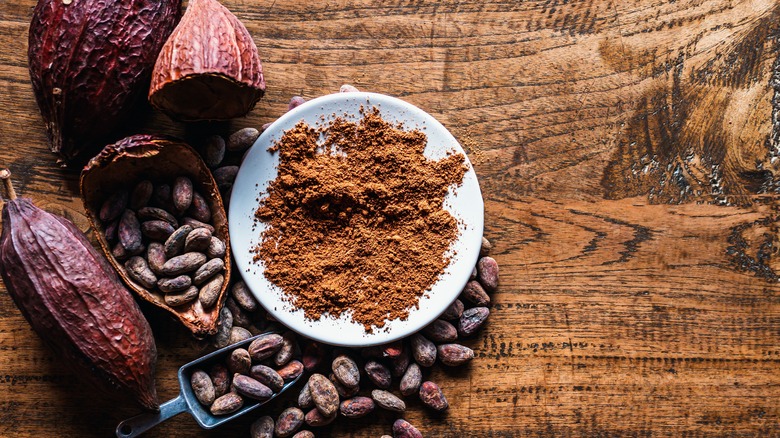Why Black Cocoa Powder Has The Most Subtle Chocolate Flavor
Whether you're baking brownies or heating up a mug of hot chocolate, cocoa powder is the star of so many delicious treats. It's easy to take for granted the process that transforms cacao beans into chocolatey decadence, but understanding the raw materials ensures your efforts in baking with chocolate come out perfect every time.
In the chocolate-making process, cacao beans are fermented, dried, and roasted before the nibs are separated from the shells and ground into a paste that essentially consists of cocoa butter, the fatty substance essential to chocolate's silky texture, and cocoa particles. Cocoa powder is made by removing most of the cocoa butter and grinding the particles into a fine powder.
In its natural state, however, cocoa powder is bitter and acidic. Introducing an alkalizing agent such as potassium carbonate into the process neutralizes the acid. Black cocoa, with its dramatically dark hue, is the most heavily alkalized variety of cocoa powder, giving it a much higher pH level than other types. This is ultimately what gives it a more subtle chocolate flavor than other powders. Along with darkening its color, alkalization mellows the taste of the cocoa, and as a result, some chocolate enthusiasts think black cocoa powder hardly tastes like chocolate at all. It's most famously used in Oreos and comes in handy any time your baked goods require especially dark coloring. It's usually mixed with other types of cocoa powder, though, as black cocoa on its own can produce dry, unappetizing pastries.
Other types of cocoa powder and when to use them
Not all cocoa powder is treated with an alkali. Natural cocoa powder retains the acidity of the cacao bean and thus has a lower pH and a sharper taste. It's the most widely available type of cocoa powder, especially in the United States, and most recipes that call for cocoa powder assume you're using the natural variety. Because natural cocoa powder is acidic, it can be used in recipes that include baking soda, an alkali, as a rising agent. The reaction between cocoa powder and baking soda produces carbon dioxide, causing baked goods to rise.
Alkalized cocoa powders are called Dutched or Dutch-process cocoa powders after their inventor, Dutch chocolatier Coenraad van Houten. Black cocoa is actually a type of ultra-Dutched cocoa powder, but most Dutch-process cocoas have a neutral pH of 7 and a dark brown color somewhere in between natural and black cocoa powders. Dutched cocoa has a milder, more earthy flavor than its natural counterpart, but it still retains a chocolatey quality missing from black cocoa. Because Dutch-process cocoa powder isn't acidic, treats made with it require baking powder (knowing the difference between baking soda and baking powder will help when substituting one for the other).
Because all three types of cocoa powder have different tastes and chemical properties, they shouldn't be used interchangeably in recipes without accounting for their differences. That said, both Dutched and natural cocoa powder can be used in a wide variety of baking projects and even savory recipes — it all depends on the flavor you prefer.

